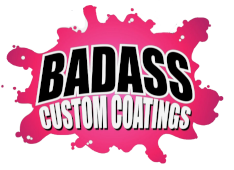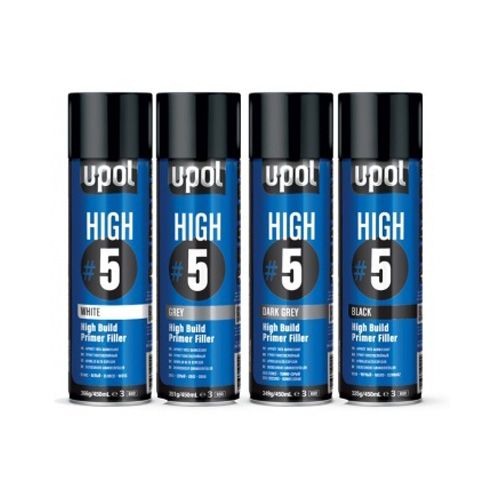This will help you not only understand different primers
and what they are used for, but help direct you know which primer you need for
your job!
Primer.
It's an important part of most painting processes, and this is no exception in
the world of automotive paint. Whether you're painting your own vehicle or just
performing touch-ups, most will recommend sanding and then applying a primer
before continuing with the final topcoat.
So - What
IS Primer?
In the
automotive world, the term primer generally refers to a paint-like substance
that's usually applied to freshly sanded metal before the topcoat. Much like
paint, different types of automotive primer can be applied with a spray gun or
a brush, and is allowed to dry thoroughly between coats. While it might seem
like adding an unnecessary step, using car primer paint when refinishing an
auto body is important for a number of reasons. Some will have good filling
capabilities; some will provide sealing against the elements and others will
work best when used in conjunction with a second type of primer before
completion of the final paint job.
Why Use
Primer?
First and
foremost, automotive primer helps the paint adhere to bare metal. Without
primer as a buffer, the shiny metal surface, whether old or new, won't bond
with the paint well. This leads to peeling, flaking, and eventually rust, which
turns a driveable car to junk in no time. Car paint primer acts as a bonding
agent to help the paint adhere more strongly to the body of the vehicle.
Equally
as important, auto paint primer helps prevent rust and moisture damage to your
vehicle by adding a couple of extra protective layers. This is generally an
automotive primer sealer, like urethane or epoxy-based.
It also
can serve as a filler for sanding/grinding marks and small scratches on your
car body, negating the need for putty or a more prolonged repair job, like a
urethane surfacer.
How to
Use Auto Primer
If you're
performing any type of bodywork, repairs or paint updates, you'll need to use
primer at some point. This is especially true if you're refinishing your car's
paint job at home and will be sanding down to bare metal or removing rust. Most
auto body primer types come available as "two-part", which means a
primer base and an activator need to be mixed before use. Simply follow the
included instructions, and alter as necessary. Others, like urethane primer,
can require up to 4-parts mix ratio, but easy-to-follow instructions are
provided. Still others come complete in aerosol form for quick and easy
application.
Once
you've mixed your car primer paint, before you proceed with priming any part of
your vehicle, you'll want to make sure you've accomplished a few preparatory
tasks first:
Remove
any rust completely, either by sanding by hand or grinding.
Fill any
large dents, dings, scratches, or pock marks on your vehicle's body, unless
you've selected a primer that's known for good build, like polyester primer.
Sand down
any blemishes or inconsistencies before priming, and especially after filling
or using putty.
Once
you've completed the sanding and other prep, you'll want to make sure the
vehicle's surface is as clean and free of particles as possible to allow for
better contact. Give your vehicle a quick wash and spot clean any areas you may
have sanded or ground down with a wet rag. As always, allow the vehicle surface
to dry completely before applying any type of paint or primer.
How you
apply the primer will depend on the scope and size of your project. If you're
just performing small touch-ups, brushing the primer on by hand will definitely
work, and you'll want to use smooth, even strokes to avoid visible lines in the
end paint job. If you're going to be painting your entire vehicle or repainting
larger portions of the car, using a spray gun will be your best option. Always
start with a clean spray gun, and keep a bucket of thinner on hand in which to
soak spray gun parts as soon as you're finished to prevent build-up on your
equipment.
Once
you've applied the auto primer, curing time will vary between types, so make
sure you read labels and instructions. Smears and poor curing jobs lead to poor
paint jobs, so err on the side of caution if you're not certain the primer coat
is completely dry and allow extra time if needed.
The
number of primer coats you'll need will also vary. For large areas and
whole-body work, two coats is the standard. This
allows maximum coverage and rust prevention, and provides the best base for
paint adhesion. For smaller touch-ups, use your best judgement. Only one good
coat might be necessary.
Different
Kinds of Automotive Primer
The kind
of car paint primer you end up using will vary with your project needs. You can
ensure a lasting, high-quality auto paint job and extra rust protection with a
good primer base. Different types of automotive primer will also withstand
sanding differently, and depending on your project, you may want to consider
this.
Epoxy
Primer - Epoxy primer is considered a good standard base when it comes to
ensuring the auto paint bonds to the metal and promotes a quality paint finish.
It's formulated specifically to prevent corrosion, so epoxy primer for cars
won't sand as well as other types, like urethane primer.
Urethane
Primer Surfacer - This type of two-part primer surfacer is often used in
conjunction with any putty or fillers you're using to perform repairs and is
applied over a secondary base primer as it doesn't provide the best corrosion
resistance.
Polyester
Primer - Polyester primer has what's known in the auto world as excellent
"build" - it fills small scratches and dings much like a putty or
filler would and has the highest filling capability of any sprayable primer.
This makes it perfect for filling bodywork blemishes AND achieving a good paint
bonding surface at the same time. However, it tends to be a bit more brittle
and prone to cracking than urethane or epoxy once dry, so this makes a great
primer for small repair and filling jobs but may not be the best choice for an
entire car.
Urethane
Sealer - This type of primer is best used merely as a strong adhesive layer for
the paint to bond to. Urethane sealer doesn't really have any filler
capabilities, but is perfect for when you're painting a vehicle that's already
in decent condition or you need to seal off a good amount of filler or
bodywork.
Acid Etch
Primer - Another good, basic car paint primer. Acid etch primer is much like
urethane surfacer in that it's forte is not so much corrosion prevention as
providing a strong bonding surface for paint. If extra rust prevention is the
goal, use acid etch primer in conjunction with a sealer or rust preventative.
This type of primer dries much more quickly than the others, so is used in a
lot of body repairs in auto shops to speed up repair time. It also eliminates
the need for any metal conditioner, so this is best when applied directly to
bare metal and then covered with a secondary primer, like epoxy or urethane.
Enamel
Primers/Sealers - Enamel primers are a extremely
economical and, much like epoxy, provide a good base for auto paint to adhere
to. They have a fair to good level of corrosion resistance.
Lacquer
Primers/Sealers - Lacquer primer dries quickly and sands quite well, but can
lead to cracking and bubbling in the long term, so these auto paint primer
types are best used beneath a corrosion prevention and paint layer for small
bodywork jobs.
Moisture
Cure Urethane Primer - This auto primer is excellent for both paint adhesion
and rust protection on difficult repair jobs where complete rust removal is
unobtainable, making it an excellent all-around primer choice for completing
two jobs at once. It also cures quickly when exposed to the moisture in the
atmosphere, so curing times are cut roughly in half.
When To
Use Automotive Primer & When You Might Not Need To
Whenever
you're dealing with bare metal, whether old or new, you'll need to use primer
before covering the area with any automotive paint. If you're making small body
repairs and need to sand down or grind out a blemish, it's important to protect
that area and make sure the paint will bond with the surface in order to
further damage from rust or peeling.
The only
time you won't need to use primer is if you're not uncovering any bare metal.
If you're just lightly buffing away the top layer of paint and haven't
uncovered your vehicle's steel panels, then it's ok to forego the primer. This
goes for any plastic parts as well. If you're not removing paint down to the
bare surface, then the primer is unnecessary.
So...What Primer Should I Use?
If you're
needing a best all-around primer, something that provides a little corrosion
protection and allows maximum paint adherence these will be some of your best
bets:
For large
paint jobs - in instances where you need to repaint/refinish a large surface
area of your vehicle, epoxy primer will usually be your best option. It's a
two-component primer, so it's simple to mix, and provides the optimum blend of
paint adhesion and corrosion resistance and protection. Epoxy auto primer can
be applied on top of everything from fillers and fiberglass to prepared steel
or factory finishes. Dry time is quick as well, making this a great all-around
auto primer for home mechanics and auto body shops alike.
For small
touch-ups - polyester primer surfacer is perfect for those little repair jobs
that require some light filling or putty, as it has great "build" -
meaning it's on the thicker side and has the ability to fill in minor nicks and
scratches and sands down well, negating the need for an extra putty or filler
step. Polyester auto primer is perfect for completing small auto body repair
jobs and is excellent for spot repairs.
For the
best rust protection - in situations where rust was present and sanded out, or
even where complete rust removal is not an option, moisture cure urethane
primer will provide the best protection from further rust damage. Urethane auto
primer sands easily, dries quickly, and holds color well.
Deciding
which type of automotive primer to use doesn't have to be overwhelming or
confusing. Begin by determining which needs are most important when it comes to
repairing or repainting your vehicle - will you need extra rust prevention? Is
strong paint adhesion a priority? If you still have any questions, Call Us at BadAss Custom Coatings and we will be happy to help!
Contact us to help you troubleshoot your primer choices, or browse our entire
selection of automotive primers and paint supplies.

